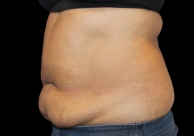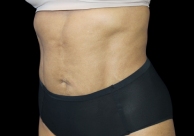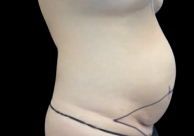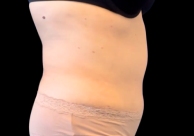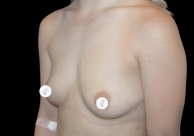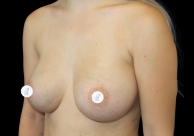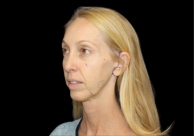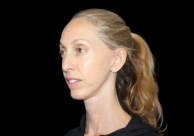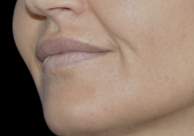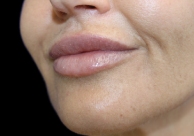Breast Reconstruction
Conveniently located to serve the areas of Honolulu, HI

Breast reconstruction is a surgical procedure to restore the breasts after cancer treatment, helping women feel more confident and feminine in their bodies. With modern reconstruction techniques, plastic surgeons can recreate the most natural-looking breasts using tissue from the patient’s own body.
The decision to undergo breast reconstruction is deeply personal and should be made in consultation with a qualified plastic surgeon. Breast reconstruction aims to create a reconstructed breast mound that is similar in size, shape, and projection to the natural breast. It not only helps physically restore the breasts but also has significant psychological and emotional benefits, allowing women to reclaim their femininity, body image, and self-esteem.
If you are interested in learning how the most advanced autologous breast reconstructions can deliver exceptional results, consider scheduling a consultation at Athena Clinic Plastic Surgery in Honolulu. Our highly experienced, double board-certified plastic surgeon, Dr. Daniel Murariu has extensive knowledge of these intricate procedures, incorporating robotic technology to promote the safest, most precise reconstruction possible. Dr. Murariu is the most experienced DIEP surgeon in the State of Hawai’i, having performed hundreds of these procedures in his previous capacity as former Director of Microsurgery and Lymphatic Surgery at Allegheny Health Network in Pittsburgh, PA and Associate Clinical Professor of Plastic Surgery at the University of Pittsburgh School of Medicine. Dr Murariu is one of half a dozen plastic surgeons in the US offering robotic DIEPs and Queen’s Medical Center is one of the few centers in the US where this is performed on a routine basis.
To get in touch today, call (808) 944-8551 or use our website’s contact form, and a staff member at Athena Clinic will help you set up your first appointment.
Due to the sensitivity of the photos in breast cancer patients, we will be happy to show you before and after photos at the time of your appointment.
Contents
The First Stage of Breast Reconstruction
Every woman deserves to feel attractive and lead her life without the burden of feeling self-conscious about her body. Women who have undergone breast cancer treatment should not have to feel defined by the appearance of their chest after a mastectomy or lumpectomy. Regardless of the situation and type of surgical treatment, Dr. Murariu can provide personalized care that aligns with their patients’ aesthetic desires.
If you are hesitant about the prospect of another surgical procedure, you should know that you have a variety of options available. Still, your surgeon will have to take measures to properly prepare your body in procedural stages:
- Tissue expander (TE): In preparation for the final reconstruction, your surgeon will insert a tissue expander, which is a temporary breast implant with the goal to maintain the breast shape for a better aesthetic result. With saline injections, they will slowly fill the expander over a few weeks, allowing the breast tissue to expand enough for the second stage of reconstruction. The TE is placed in a pre-pectoral plane (above the muscle) for a more natural and comfortable location, as well as decreased animation deformity compared to subpectoral placement. Dr. Murariu has been an early adopter of this technique and has been performing it since 2017.
- Acellular Dermal Matrix (ADM): An ADM is a thin mesh device that your surgeon will wrap around the tissue expander. In response to this mesh, the body will regenerate more soft tissue in the area and help mitigate procedural risks. The ADM helps stabilize the implant, offers added thickness to decrease rippling, and decreases implant exposure long term.
- Resensation: This option involves using nerve tissue from a donor or another area of the body to preserve sensation in the breasts, particularly if undergoing nipple-sparing mastectomy. Although it is a relatively new technique, patients undergoing resensation can enjoy long-lasting results and improved sensation in the reconstructed breast. (1) Dr. Murariu has been performing resensation since 2018.
The Second Stage of Breast Reconstruction
Standard DIEP Flap
A deep inferior epigastric perforator (DIEP) flap is one of the most reliable and transformative forms of autologous breast reconstruction available. Since it requires a transfer of tissues from the abdomen to the breast, surgeons must have an extensive understanding of the anatomy of the abdomen, including its network of blood vessels. Still, this form of procedure compared to the robotic approach may have a higher rate of abdominal hernias and bulges. (2) The procedure is suitable for women who have enough abdominal fat to recreate the breast mounds and are also interested in having a tummy tuck.
For this procedure, the anesthesiologist will administer general anesthesia, and your surgeon will make an elliptical incision within the abdomen. For just one breast restoration (unilateral), they will only need to make half of an elliptical incision. Next, they will carefully remove this section of skin, fat, and vessels (artery and vein)- known as a “free flap.”
For the second stage, your surgeon will use the previous incision on the breast after the mastectomy. They will then connect the internal mammary artery and vein within the chest directly to the vessels of the “free flap” to connect the blood supply of the chest. Since the vessels are 2-3 mm in size, a microscope is utilized. They will then reform this tissue to create the breast mound, complete with vascularization. They will close the abdominal incision so that the remaining scar will be hidden just above the pubic area.
Lymph node transfer
For patients who suffer from lymphedema, at the time of the DIEP lymph nodes from the groin can be transferred to the armpit area. Over the course of 9-12 months, the lymphedema improves, resulting in smaller arms, fewer chances of infection, and more symmetric to the opposite arm.
Robotic DIEP Flap
A robotic DIEP flap relies on the assistance of robotic instruments. This technique is even more precise and allows for smaller incisions, which means the donor site is left less damaged and the receiving site can heal with minimal scarring. (3) One of the difficulties surgeons face in standard DIEP flap procedures is having to dissect through the anterior rectus fascia (a part of the abdominal wall), muscle, and nerves in order to free up the vessels that supply the skin and fat. Despite the best efforts of steady hands and sharp blades, accessing and carefully incising this tissue presents difficulties and can lead to a higher chance of hernias and bulges, as well as more pain postoperatively, in the standard DIEP technique. (3)
Employing robotic surgery, Dr. Murariu is able to use very small incisions in the anterior rectus fascia to access the vessels with greater accuracy. Using 3 ports that are only 8 mm, your surgeon uses the robotic equipment to dissect the connecting artery and vein of the “free flap” from inside, greatly reducing the risk of hernia or bulges that sometimes occur with the standard DIEP. Overall, hyperfine robotic movements cause less disturbances to the surrounding muscles, nerves, and fascia which will aid in recovery.
Aside from Athena Clinic Plastic Surgery, only a handful of other U.S. surgical practices offer this highly advanced form of the DIEP flap procedure. Dr. Murariu is the only one to offer robotic DIEP in the state of Hawaii and has accumulated one of the largest experiences in the world. He is internationally known for his work on robotic DIEPs with multiple articles, book chapters, and conference presentations internationally. He has been featured on multiple occasions on television, including local news, as well as featured in an upcoming episode of “New Frontiers” on Bloomberg TV and on-demand platforms in the fall of 2024. He is currently editing a textbook “Atlas of Robotic Procedures in Plastic Surgery” that will be published by Springer in early 2025.
Breast Reconstruction with Implants
Tissue expanders can also prepare you for breast implants if you choose to undergo this method. Dr. Murariu can speak with you about your options which vary in size, shape, texture, and material- each designed to produce a customized outcome. Breast implants will ensure that your restored breasts are symmetrical and harmonious with your natural body structure. They are also long-lasting; research demonstrates that most surgeons agree that breast implants are designed to last about 10 years before requiring a follow-up procedure. (4)
LAT Flap
For this procedure, your surgeon will take a section of skin, fat, blood vessels, and a small portion of the latissimus (lat) dorsi muscle. With this technique, your surgeon will simply rotate a section of the muscle from the back to the front of the torso while keeping the original blood supply intact. Depending on your anatomy, they may need to relocate certain blood vessels of the flap and connect them to vessels within the chest. After a LAT flap procedure, you can expect a scar on the back. As with most centers nationwide, this option is used only as a salvage option and not a first “go-to” option.
Optional Third Stage of Breast Reconstruction
The third stage of reconstruction often involves refining the aesthetics of the breasts after the flap or implant stage. If you choose to enhance your look with fat grafting and/or nipple reconstruction, you will have to undergo the procedure months after your initial reconstruction.
Fat Grafting
Fat grafting is a reliable method of transferring a portion of the body’s fat to volumize another area. For example, facial fat grafting is popular, but surgeons can also perform it for the breasts as well. For this procedure- also called fat transfer- your surgeon will apply liposuction techniques to safely extract fat from a part of the body where there is excess. They will then purify the tissue in a machine called a centrifuge. After isolating only the fat cells, they can strategically reintroduce them into the breasts to make them appear plumper, rounder, and decrease the chance of rippling if the implant is the final reconstruction option. Since your surgeon will take the tissue and inject it back into the body, it will continue to thrive and grow in its new location. Your surgeon can perform fat grafting as part of another breast reconstruction procedure, or you can undergo the procedure by itself for more subtle rejuvenation.
Nipple Reconstruction
You will likely be able to undergo a nipple reconstruction about 3 to 4 months after your reconstruction to finalize your cosmetic changes. It is a relatively simple outpatient procedure that your surgeon can complete in a few different ways. Your surgeon can utilize skin from the reconstructed breast or an area of the inner thigh, and they may use ink tattooing to recreate the natural coloring of the nipples. If you wish, they can simply apply 3D tattooing techniques.
Lymphedema Recovery
Lymphedema is a chronic disease caused by a buildup of lymphatic fluid (a mixture of white blood cells, plasma, dead cells, water, fat, bacteria, and more) in certain parts of the body. Left untreated, this can cause swelling throughout the body, pain, numbness and tingling in fingertips, skin discoloration, and pain. (6) Dr. Murariu offers different procedures to correct this issue.
- Lymph Node Transfers: This procedure corrects lymphatic buildup by collecting some of the body’s natural lymph nodes and placing them in the collection sites to reboot normal lymphatic functions. (7)
- Lymphovenous Bypass: Lymph vessels are joined to veins to bypass clogged lymph nodes and allow lymphatic fluids to re-enter the bloodstream. (7)
- Debulking Surgery: These procedures reduce the size of tumors or lymph buildups to lessen the load placed on the body’s healing processes. (8)
Am I A Candidate for Breast Reconstruction?
The best candidates for breast reconstruction are healthy women who have finished cancer treatment and do not have any underlying conditions that could interfere with the procedure or recovery. Dr. Murariu will consider non-smokers and those who are willing to stop smoking for an allotted period to promote a safe recovery. Candidates for the DIEP flap should have a sufficient amount of abdominal fat, and prospective patients for both DIEP flaps should have healthy veins and arteries.
The DIEP flap is not suitable for those who have had a previous tummy tuck surgery. Other flaps (from the thigh (PAP or TUG) or sides (lumbar artery perforator) can be used when the belly is not available. For those who have had radiation therapy, the DIEP flap is the gold standard in breast reconstruction.
Consultation
During your consultation at Athena Clinic, Dr. Murariu will speak with you about your goals for breast reconstruction and which options may appeal to you. They will assess your breast anatomy and discuss how they could move forward with your surgical plan in coordination with your breast surgeon. Ask your breast surgeon to contact Dr Murariu to perform the reconstruction. Dr Murariu is credentialed at all major hospitals, including Queen’s, Kapiolani, Straub, Pali Momi, Kuakini, and Kaiser Permanente, and takes all insurances, including Kaiser.
During your consultation, Dr Murariu will ensure to give you comprehensive information regarding preparation, procedure, and how the recovery process works. He will be sure to consider your medical history and the nature of your previous cancer treatment before making recommendations.
During this first appointment at Athena Clinic Plastic Surgery, you will have a chance to ask questions, so please come prepared so that our surgeons and staff can provide you with the best care possible. The Robotic DIEP procedure is performed at Queen’s Medical Center and Dr. Murariu teams up with Dr. Peter Deptula, another plastic surgeon interested in complex microsurgical reconstruction. Together they also form Hawai’i’s only limb salvage team for patients with severe trauma that would otherwise require an amputation.
To request your breast reconstruction consultation today, call our Honolulu office at (808) 944-8551 or use our online form, and a member of our staff will be happy to assist you.
Cost of Breast Reconstruction in Honolulu
Your surgeon will review the total cost of your surgery during your consultation after taking into account surgical fees, anesthesia, follow-up appointments, and other factors. Luckily, your insurance will cover all or a majority of your breast reconstruction. Your surgeon will speak with you about the specifics during your consultation.
References
- Momeni A, Meyer S, Shefren K, Januszyk M. Flap Neurotization in Breast Reconstruction with Nerve Allografts: 1-year Clinical Outcomes. Plastic and Reconstructive Surgery – Global Open. 2021;9(1):e3328. doi:https://doi.org/10.1097/gox.0000000000003328
- Moreira A, Bailey E, Chen B, Nelson W, Li J, Fortunato R, Nosik S, Murariu D. A new era in perforator flap surgery for breast reconstruction: A comparative study of robotic versus standard harvest of bilateral deep inferior epigastric artery perforator flaps. J Reconstr Microsurg, eFirst Aug 5, 2024. doi: 10.1055/s-0044-1788642
- Murariu D, Chen B, Bailey E, Nelson W, Fortunato R, Nosik S, Moreira A. Trans-abdominal robotic harvest of bilateral DIEP pedicles in breast reconstruction: Technique and interdisciplinary approach. J Reconstr Microsurg. eFirst Aug 27, 2024. Doi: 10.1055/s-0044-1788930
- Fardo D, Sequeira Campos M, Pensler JM. Breast Augmentation. PubMed. Published 2021. https://www.ncbi.nlm.nih.gov/books/NBK482206/
- Escandón JM, Manrique OJ, Christiano JG, et al. Breast reconstruction with latissimus dorsi flap: a comprehensive review and case series. Annals of Translational Medicine. 2023;11(10):355-355. doi:https://doi.org/10.21037/atm-23-469
- Sleigh BC, Manna B. Lymphedema. PubMed. Published April 19, 2023. https://www.ncbi.nlm.nih.gov/books/NBK537239/
- Schaverien MV, Badash I, Patel KM, Selber JC, Cheng MH. Vascularized Lymph Node Transfer for Lymphedema. Seminars in Plastic Surgery. 2018;32(1):28-35. doi:https://doi.org/10.1055/s-0038-1632401
- Debulking surgery. Cancer Treatment Centers of America. Published August 17, 2021. https://www.cancercenter.com/treatment-options/surgery/debulking-surgery
